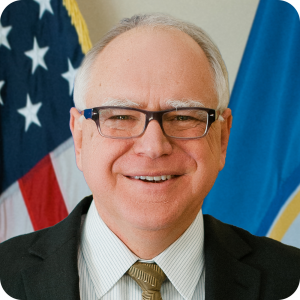Governor Walz Plan Suggests Hybrid Model for Hennepin County Schools
Governor Walz Announces Learning Guidance for Upcoming School Year
Minnesota Governor Tim Walz made the long-awaited announcement for the 2020-21 school year that leaves the reopening decision up to school districts with guidance from state health and education officials. The K-12 plan is meant to provide a flexible approach that may mean schools in the various districts have different plans. But it’s leaves districts with a lot to figure out.
 “There’s a lot to unpack,” said Gov. Walz noting the complexity of this plan. “There’s people that would just love to have one statement, ‘yep let’s do this, let’s just go in.’ or ‘let’s just stay out.’ We think this is the best way to do it.”
“There’s a lot to unpack,” said Gov. Walz noting the complexity of this plan. “There’s people that would just love to have one statement, ‘yep let’s do this, let’s just go in.’ or ‘let’s just stay out.’ We think this is the best way to do it.”
According to the governor’s office, the Departments of Education and Health will work with school districts and local health professionals throughout the school year to help districts decide how to tailor their learning models depending on the progression of the virus in their specific community.
“With this approach, we are pairing the knowledge and data from our Departments of Health and Education with the expertise of our local school districts to make the best decisions for our students across the state,” said Walz.
The Walz administration called this localized model the Safe Learning Plan. It has been contemplating three options: 1) in-person learning 2) a hybrid model, and 3) distance learning only. However, the Safe Learning Plan relies on case numbers based on the county schools are in.
According to the guidance from the state, school districts in Hennepin County currently have a 14-day case rate of 20.93 cases per 10,000 residents, putting those districts in the hybrid model. But it could easily change. Under the state’s learning model, 10-19 cases per 10,000 people would be in-person learning for elementary students and hybrid learning for secondary students. Individual districts could opt for a more cautious approach.
Districts in counties with a 14-day rate of more than 50 COVID-19 cases per 10,000 people are recommended to do all distance-learning.

The learning model determination may not be the same for all grades. The research has shown much more limited transmission of COVID-19 in younger children, health officials said.
“This is intended to be a flexible approach,” said Jan Malcolm, Minnesota Department of Health commissioner.
The guidance does not apply to private schools.
Using Minnesota Department of Education reopening formulas using current case rates, officials provided the statewide breakdown:
- 181 districts: all in-person learning
- 230: in-person elementary, hybrid for secondary
- 107: hybrid elementary & secondary
- 7: hybrid for elementary, distance learning secondary
- 9: all distance learning
Teachers Will Get Shields, Face Masks Required
In schools that reopen, Minnesota Department of Education officials say every teacher will be provided a clear face shield. Every student and educator will also be required to wear masks.
“It became as important as a pencil or a pen or a paper or a device in the building,” said Heather Mueller, MDE deputy commissioner.
The state will also provide resources for testing in case students or staff get sick.
The new plan this fall also gives families the option to do distance learning if they are uncomfortable or if a parent or child’s health condition makes it too risky for them to do in-person learning.
Hospitalizations, Testing Positivity Rate Climbing
The announcement comes at a difficult time, says state health officials, because confirmed COVID-19 cases are climbing. The 7-day average testing positivity rate is 4.9%, up from 4.7% the week before.
“One of the reasons that we are so concerned about the rise in case numbers is because we recognize the importance of school and the value of in-person learning if it is safe,” said Kris Ehresmann, the state’s infectious disease director.
Of particular concern to Minnesota Department of Health officials has been the rise in hospitalizations. MDH listed 310 hospitalizations in Minnesota on Wednesday with 143 in intensive care. That’s the highest hospital usage MDH has seen in about a month, officials said.
“As we have feared, we are seeing our hospitalizations begin to increase. And I don’t think it’s just a blip,” said Ehresmann.
Surveys Provide Mixed Results
Today’s announcement comes as an Education Minnesota survey of more than 20,000 teachers and staff members revealed a preference for distance learning. The survey found 49% preferred distance learning only, 29% for hybrid classes and 17% for in-person only instruction.
However, 46% of educators preferred some level of in-person instruction, but only if the whole school community can learn, teach and work safely during the pandemic.
An informal survey by the Minnesota Department of Education in early July found a majority of respondents, 64%, said they would feel comfortable having their children return to in-person classes. Of the 64% who said they’d be comfortable sending their kids back to school this fall, 94% of the respondents said they would send their children back to school full time.
Read the 7-29-2020 COVID-19 Update from the Minnesota Department of Health Here
 How COVID-19 is impacting our community
How COVID-19 is impacting our community
Find all of our latest COVID-19 stories here
Brooklyn Center | Brooklyn Park | Crystal | Golden Valley | Maple Grove | New Hope | Osseo | Plymouth | Robbinsdale | Rogers | Twin Cities


